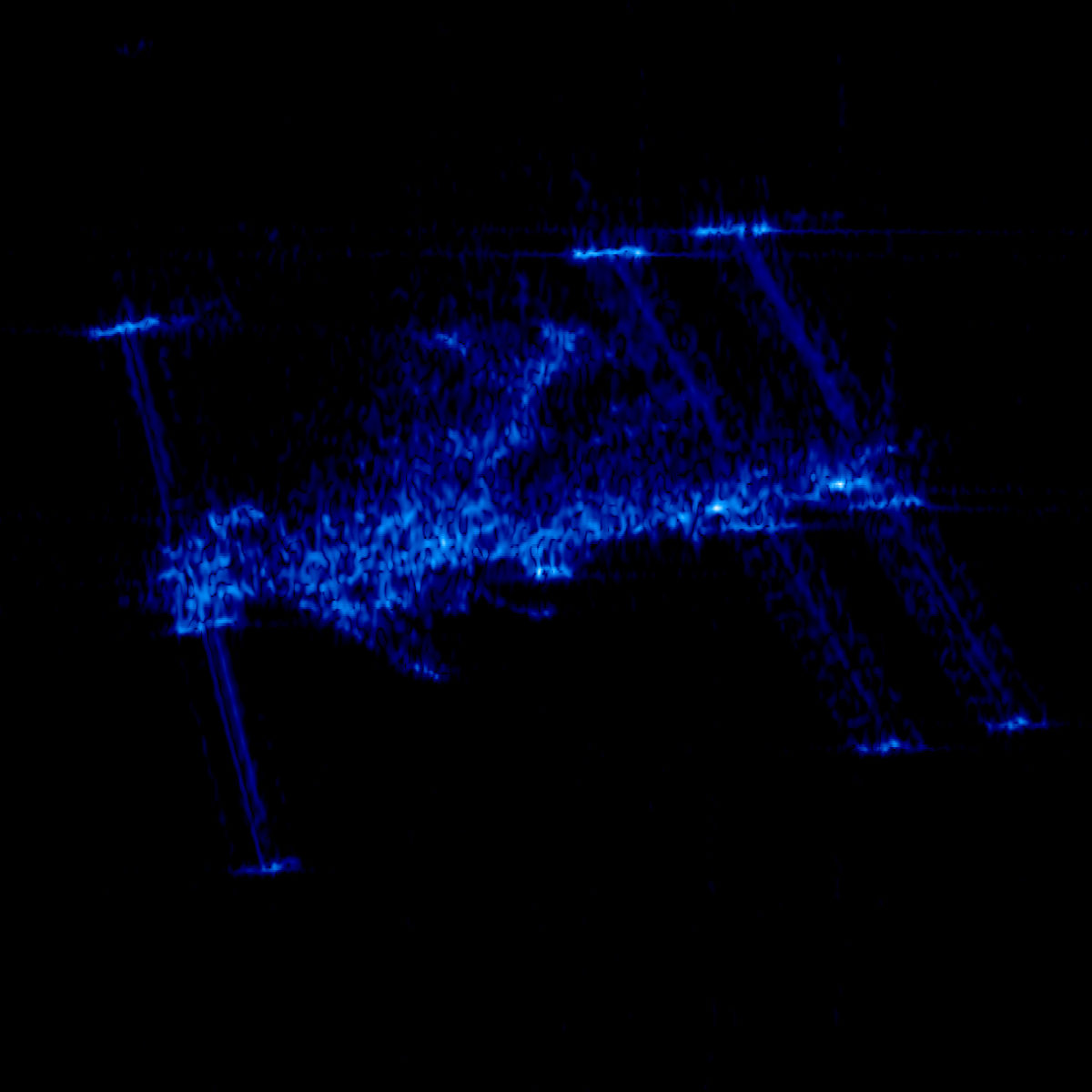Emily Lakdawalla • Mar 04, 2010
Pretty Picture: ISS in the X-band
This is from the "Just Plain Cool" department: a picture of the International Space Station taken in microwave radar. The specific radio wavelength involved is the X-band, radio with wavelengths of a few centimeters. (I've noticed some bloggers incorrectly reporting this image as being taken in "X-rays," which is quite a different animal entirely, waaaaay shorter wavelength than visible light and not a very friendly wavelength to be irradiating astronauts with; microwave radar is waaaay longer wavelength than visible light and of no consequence to astronaut health.) For comparison, I'm also posting an image of the ISS taken with a plain old optical camera just a couple of months later.

On March 13, 2008, the International Space Station (ISS) passed across the field of view of Germany's remote sensing satellite, TerraSAR-X, at a distance of 195 kilometers.
In contrast to optical cameras, radar does not "see" surfaces. Instead, it is much more sensitive to the edges and corners which bounce back the microwave signal it transmits. Unless they are directly facing the radar spacecraft, smooth surfaces such as those on the ISS solar and radiator panels, do not reflect a strong signal to the detector, so they appear dark. Yet the bright spots outlining edges and corners clearly show the shape of the ISS. The central element on the ISS, to which all the modules are docked, has a grid structure that presents a multiplicity of reflecting surfaces to the radar beam, making it readily identifiable. This image has a resolution of about one meter.
Image: German Aerospace Center (DLR)The main reason I'm posting this picture is because it's a picture of a pretty familiar object -- the Space Station -- in an unfamiliar part of the electromagnetic spectrum. I post images here all the time in wavelengths longer than the human eye can see, and it's tempting to assume that images of the same places will look pretty much the same in visible wavelengths. But the photo above shows how simultaneously familiar and strange a well-known object looks in radar, reminding me that my instincts in interpreting what I see in radar images of places like Titan, Venus, and the Moon may not always be reliable.
A final note about this image -- I first learned about it via DLR's Twitter feed. I'm finding it easier to get news about European missions via Twitter than more traditional means!
Let’s Go Beyond The Horizon
Every success in space exploration is the result of the community of space enthusiasts, like you, who believe it is important. You can help usher in the next great era of space exploration with your gift today.
Donate Today

 Explore Worlds
Explore Worlds Find Life
Find Life Defend Earth
Defend Earth

